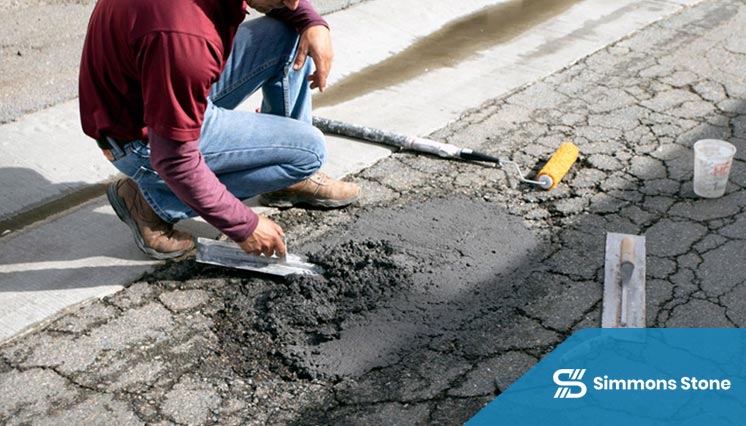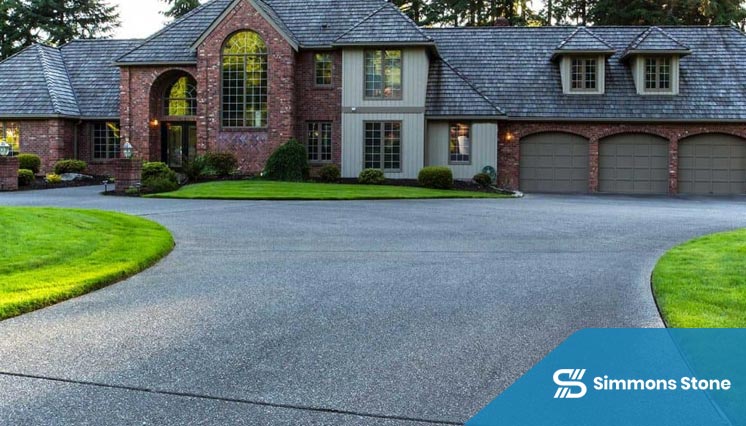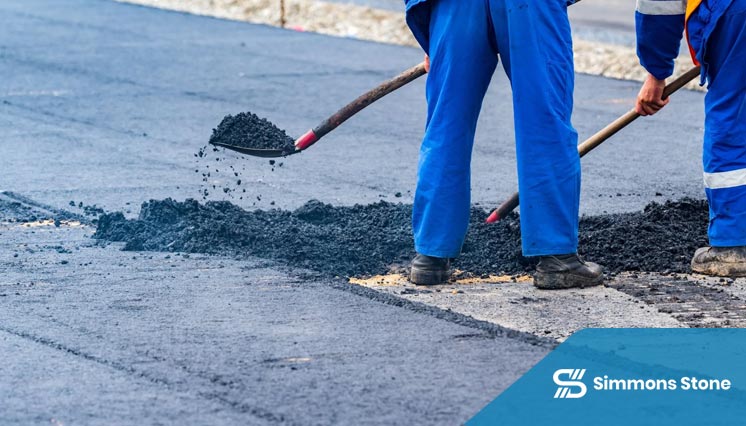About the Service
Asphalt driveway repair is simply the process of fixing up the damaged parts of your driveway instead of replacing the whole thing. It’s like patching up a favorite pair of jeans—you don’t toss them just because they have a hole. We figure out what’s going wrong and apply the right fix, whether that means filling cracks, patching potholes, or leveling out uneven spots.
In many cases, a repair is all that’s needed to get your driveway looking good and functioning well again. It’s quicker and more affordable than a full replacement, and if done right, it can extend the life of your driveway for years.

Signs Your Driveway Might Need Repair
Wondering if your asphalt needs a little care? Here are a few common signs to look for:
Cracks That Keep Getting Bigger
Small cracks aren’t unusual, but when they start spreading or getting deeper, it means water is getting in, and that can cause serious damage over time.
Potholes Forming
These are more than just annoying. Potholes happen when water seeps under the asphalt and softens the base. If you’re dodging holes every time you pull in, it’s time to take action.
Uneven or Sunken Areas
Parts of the driveway that sink or slope weirdly could point to drainage problems or a weak base layer beneath the asphalt.
Faded or Dry-Looking Surface
If your driveway looks gray, brittle, or dusty, that usually means the protective top layer is wearing off, leaving it vulnerable to more damage.
Water Pooling After Rain
Standing water can slowly break down the asphalt. If you notice puddles that don’t drain well, it’s worth checking for hidden issues.

How We Repair It
Every driveway is a little different, so we always start by figuring out what it actually needs. Here’s what a typical repair process looks like:
1. Inspection & Evaluation
We start by taking a close look at your driveway. We check for cracks, holes, soft spots, and drainage issues. This helps us figure out the best plan of action—because no one wants to pay for work they don’t need.
2. Crack Filling & Patching
If there are cracks, we clean them out and fill them with hot rubberized asphalt or patching mix, depending on their size. This helps stop water from getting in and making things worse.
3. Leveling Uneven Areas
Sunken or bumpy areas get filled and smoothed out. We may also regrade parts of the driveway if necessary to improve drainage and prevent future sagging.
4. Sealcoating
Once everything is fixed, sealcoating helps protect the whole surface from sun, rain, and oil spills. It also gives the driveway that nice, clean black finish.

Why Repair Instead of Replace?
Sometimes people assume they need to start over, but repairs can actually be the smarter option—especially if the damage is limited. Here’s why:
It’s Way More Budget-Friendly
Repairs cost a fraction of what it takes to install a brand-new driveway. That’s money you can save, or put toward other home upgrades.
Less Disruption to Your Routine
Most repair jobs can be wrapped up in a day or two. You don’t have to block off your whole driveway for a week or go without parking.
Protects What You Already Have
Catching problems early keeps them from turning into bigger ones. A few simple repairs can buy your driveway several more years of good use.
Boosts Curb Appeal
Even small touch-ups can make a big difference in how your home looks from the street. A smooth, dark driveway always makes a better impression.